#International Astronomical Union (IAU)
Text
oh polls are backfiring on me i just saw a "is pluto a planet" poll with 72% of people saying yes. im biting and chewing im spitting up blood
#dont get me going. do not get me going#'fuck nasa' IT WAS THE IAU !!!#INTERNATIONAL !!!#ASTRONOMICAL !!!#UNION !!!#brot posts#astro posting
2 notes
·
View notes
Text
I think the IAU should change the definition of planet to "A celestial body that loves me personally."
0 notes
Text
Ibnu Bajjah Ilmuwan Besar Multidisiplin : Banyak Karya, Mati Muda
Ibnu Bajjah Ilmuwan Besar Multidisiplin : Banyak Karya, Mati Muda
Ibnu Bajjah (ابن باجة) atau lengkapnya Abu Bakar Muhammad bin Yahya bin ash-Shayigh at-Tujibi bin Bajjah (أبو بكر محمد بن يحيى بن الصايغ) adalah seorang astronom, filsuf, musisi, dokter, fisikawan, psikolog, botanis, sastrawan, dan ilmuwan Muslim Andalusia. Beliau dikenal di Barat dengan nama Latinnya, Avempace. Ia lahir di Zaragoza 1095, tempat yang kini berada di wilayah Spanyol, dan meninggal…

View On WordPress
#"Rezim Soliter"#adbir al-Mutawahhid#al-Ittisal al-Aql Bi al-Insan#Al-Nafs#Avempace#dan Risalah al-Ghayah al-Insaniyyah#Galileo Galilei#Ibnu Bajjah#Ibnu Rusyd#Ilmuwan Muslim#International Astronomical Union (IAU)#Kitab al-Nabat#Tardiyyah (syair-syair) Risalah al-Akhlaq
0 notes
Text
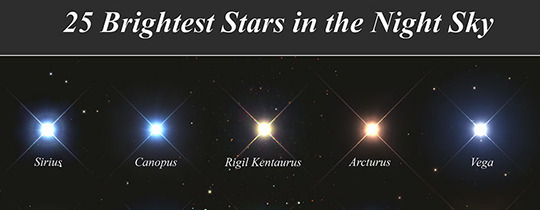
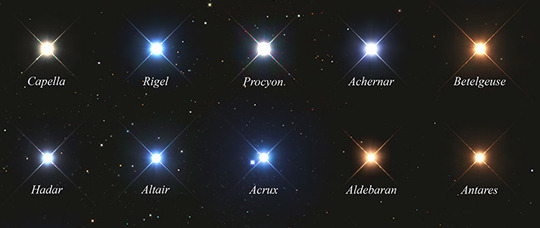

25 brightest stars
Their names are all IAU-recognized; some names have interesting meanings, including Sirius ("the scorcher" in Latin), Vega ("falling" in Arabic), and Antares ("rival to Mars" in Greek). * IAU: International Astronomical Union
l NASA APOD
1K notes
·
View notes
Text
Close to 18 years ago, astronomers spotted a miniature, icy world named Eris billions of miles beyond Neptune. But unlike its dwarf planet cousin Pluto — which New Horizons promoted to a rich, dynamic world after its visit in 2015 — Eris has not had any robotic visitors. It is so far away from Earth, in fact, that it shows up in observations just as a single pixel of light.
All in all, scientists know very little about what happens on Eris.
Though what we do know is Eris is known to have an atmosphere that freezes and snows onto the surface below, thanks to its place near the edge of the solar system. It's about 68 times farther from the sun than Earth is. And now, new models based on data from an array of radio telescopes in Chile have revealed more about Eris. Heat leftover from the dwarf planet's birth seems to be oozing out and slowly flexing its icy surface.
The process is causing Eris to behave less like a solid, rocky planet and "more like a soft cheese or something like that," study co-author Francis Nimmo of the University of California Santa Cruz said in a statement. "It has a tendency to flow a bit."
While a lot still remains unknown about Eris, it is considered an "almost perfect" twin of Pluto — both dwarf planets are nearly exactly the same size. Actually, when it was first spotted in 2005, it appeared to be slightly bigger than Pluto, triggering a debate among scientists. This had led the International Astronomical Union (IAU) to clarify its definition of a planet and demote Pluto to a dwarf planet. It was thanks to this contention in the scientific community that the IAU in 2006 named the dwarf planet Eris, after the Greek goddess of discord.
Continue Reading.
143 notes
·
View notes
Text
WHY IS PLUTO NOT A PLANET ANYMORE??
Blog#399
Wednesday, May 8th, 2024.
Welcome back,
Textbooks had to be rewritten. Members of the public were outraged. Our understanding of the solar system itself was forever changed on Aug. 24, 2006, when researchers at the International Astronomical Union (IAU) voted to reclassify Pluto, changing its status from a planet to a dwarf planet — a relegation that was largely seen as a demotion and which continues to have reverberations to this day.

Today, the debate about Pluto exposes difficulties in the definition of "planet." The IAU defines a planet as a celestial body orbiting the sun, with a nearly spherical appearance, and that has (for the most part) cleared debris from its orbital neighborhood. But even this set of metrics is not universally agreed upon.
Earth, and even Jupiter, have not cleared many asteroids from their orbital regions despite their large size. Moreover, there are small worlds that are circular and that orbit the sun and yet are not considered planets, such as Ceres.
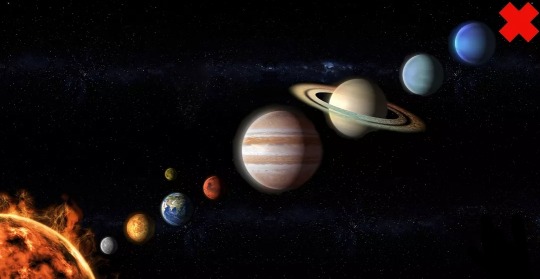
Pluto's so-called demotion from planetary status raises larger issues about how to define any object in the solar system, or even in space more generally. It shows that science cannot, sometimes, slot objects into easy categories. Because if the definition of a planet once again widens, it is unclear how to assess the numerous non-circular objects that circle our sun. This may even put the asteroid belt into question, referring to the huge band of small objects between Mars and Jupiter. Or what happens if a planet is somehow broken up into pieces?
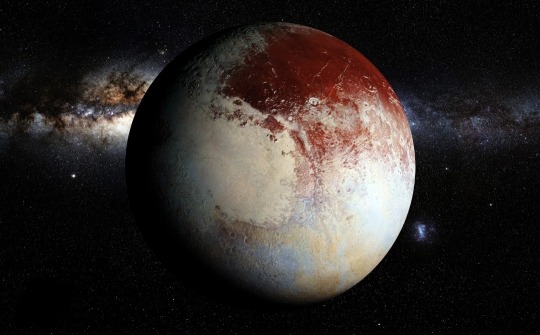
All the same, as the Pluto debate took place almost 20 years ago, many still don't quite understand all the fuss, nor why Pluto was knocked from its planetary position. But the solar system's transformation from nine planets to eight (at least by the standard IAU definition) was a long time in the making and helps encapsulate one of the greatest strengths of science — the ability to alter seemingly steadfast definitions in light of new evidence.
The word planet (in English) stretches back to antiquity, deriving from the Greek word "planetes," which means "wandering star."

The five classical planets — Mercury, Venus, Mars, Jupiter and Saturn — are visible to the naked eye and can be seen shifting in strange pathways across the sky compared with the more distant background stars.
After the advent of telescopes, astronomers discovered two new planets, Uranus and Neptune, which are too faint to spot with the naked eye

(Note that this definition of "planet" is following the Greco-Roman tradition on which the International Astronomical Union or IAU's community definitions are based. The names of planets vary by culture and the naked-eye planets were observed around the world during antiquity.)
When astronomers discovered Ceres (today considered a dwarf planet), they initially categorized it as a "planet" among scientific communities of the day. But that began to change as further measurements showed it was smaller than other planets ever seen at the time. Eventually, Ceres was lumped into a group of rocky bodies, called "asteroids", of which we now know of hundreds of thousands of these in the asteroid belt alone.

Pluto was found and classified as a planet in 1930 (note the IAU was formed in 1919) when astronomer Clyde Tombaugh of the Lowell Observatory in Arizona compared photographic plates of the sky on separate nights and noticed a tiny dot that drifted back and forth against the backdrop of stars. Right away, the solar system's newest candidate was considered an oddball, however. Its orbit is so eccentric, or far from circular, that it actually gets closer to the sun than Neptune for 20 of its 248-years-long trip. It also is tilted to the ecliptic, which is the plane upon which the other solar system planets orbit.
Originally published on www.space.com
COMING UP!!
(Saturday, May 11th, 2024)
"THE UNIVERSE COULD BE FILLED WITH ULTRALIGHT BLACK HOLES THAT CAN'T DIE??"
#astronomy#outer space#alternate universe#astrophysics#universe#spacecraft#white universe#space#parallel universe#astrophotography
69 notes
·
View notes
Text
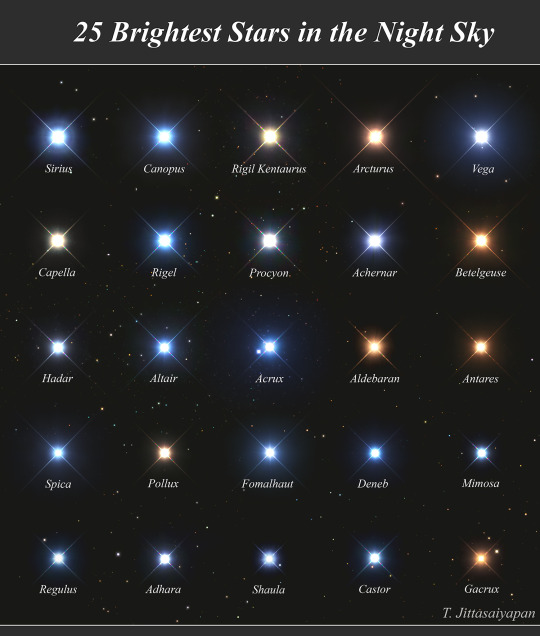
25 Brightest Stars in the Night Sky
Image Credit:: Tragoolchitr Jittasaiyapan
Explanation: Do you know the names of some of the brightest stars? It's likely that you do, even though some bright stars have names so old they date back to near the beginning of written language.
Many world cultures have their own names for the brightest stars, and it is culturally and historically important to remember them. In the interest of clear global communication, however, the International Astronomical Union (IAU) has begun to designate standardized star names.
Featured above in true color are the 25 brightest stars in the night sky, currently as seen by humans, coupled with their IAU-recognized names. Some star names have interesting meanings, including Sirius ("the scorcher" in Latin), Vega ("falling" in Arabic), and Antares ("rival to Mars" in Greek). It's also likely that other of these bright star names are not familiar to you, even though familiar Polaris is too dim to make this list.
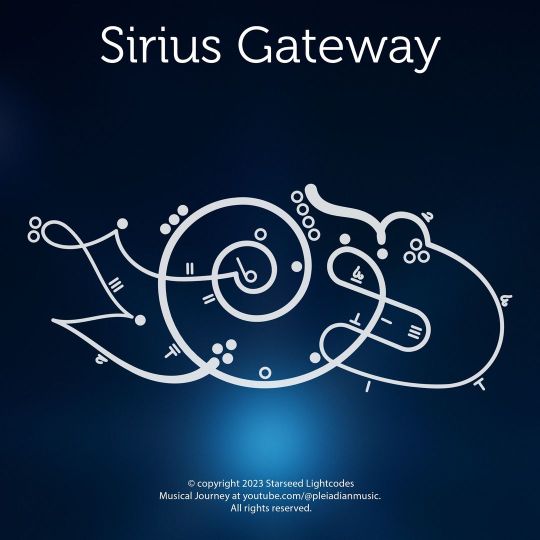
29 notes
·
View notes
Text

Hubble captures jewel-bright spiral galaxy NGC 4689
This NASA/ESA Hubble Space Telescope image shows the jewel-bright spiral galaxy NGC 4689, which lies 54 million light-years from Earth in the constellation Coma Berenices. This constellation has the distinction of being the only one of the 88 constellations officially recognized by the International Astronomical Union (IAU) as one named after the historical figure, Queen Berenice II of Egypt.
The Latin word "coma" references her hair, which means that NGC 4689 lies in the hair of a queen. Some people of Berenice's time would have meant this quite literally, as the story goes that her court astronomer thought that a missing lock of Berenice's hair had been catasterized (a word meaning "placed among the stars") by the gods: hence the name of the constellation, Coma Berenices.
NGC 4689 holds an interesting—albeit less royal—place in modern astronomy. The universe is so incredibly vast that at a distance of 54 million light-years NGC 4689 is relatively nearby for a galaxy. This image includes data from two sets of observations, one made in 2019, the other in 2024 , and both are part of programs that observed multiple "nearby" galaxies.
The 2024 observing program is an interesting example of how Hubble—an extraordinarily productive telescope for more than three decades—and the James Webb Space Telescope complement each other. Observations collected by Webb stand to transform our understanding of how galaxies change and evolve over time, by providing infrared data at an unprecedented level of detail and clarity. However, ultraviolet and visible light observations from Hubble—such as those used to create this image—complement Webb's observations.
In this case, the Hubble data offer a more accurate assessment of the stellar populations of nearby galaxies, which is crucial to understanding their evolution. Hubble and Webb observations play an important role in developing our understanding of how galaxies form and evolve, and observations of NGC 4689 are a valuable part of that quest for knowledge. In fact, Hubble featured an image of the galaxy before, in 2020.
17 notes
·
View notes
Photo
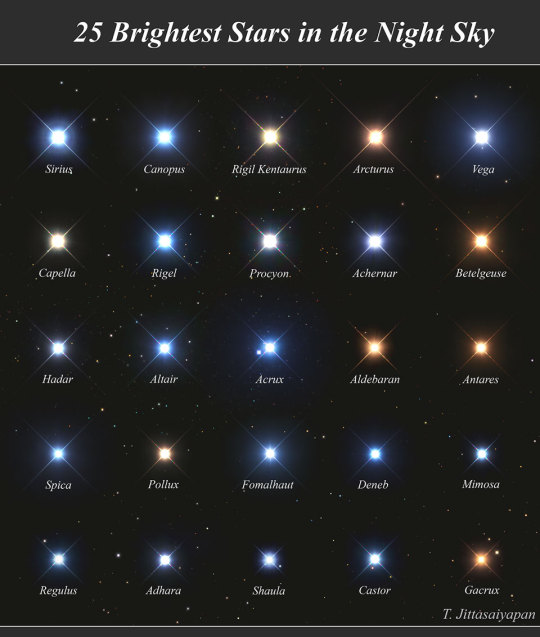
2022 December 18
25 Brightest Stars in the Night Sky
Image Credit & Copyright: Tragoolchitr Jittasaiyapan
Explanation: Do you know the names of some of the brightest stars? It's likely that you do, even though some bright stars have names so old they date back to near the beginning of written language. Many world cultures have their own names for the brightest stars, and it is culturally and historically important to remember them. In the interest of clear global communication, however, the International Astronomical Union (IAU) has begun to designate standardized star names. Featured here in true color are the 25 brightest stars in the night sky, currently as seen by humans, coupled with their IAU-recognized names. Some star names have interesting meanings, including Sirius ("the scorcher" in Latin), Vega ("falling" in Arabic), and Antares ("rival to Mars" in Greek). You are likely even familiar with the name of at least one star too dim to make this list: Polaris.
∞ Source: apod.nasa.gov/apod/ap221218.html
168 notes
·
View notes
Text
So about that poll I just reblogged - you know, this one:

(Cropped to just the question for length and also because I didn't screenshot it before I voted and don't want to spoil the results or have to go somewhere I could show just the buttons)
Like I said in the tags, it's kind of a trick question!
How so?
There are two valid answers: 5, AND more than 6.
See, the IAU - the International Astronomical Union - recognizes 5 of them: Pluto, Eris, Ceres, Makemake, and Haumea.
But the entire reason the dwarf planet classification exists is because in the span of the three years from 2002-2005, we discovered SIX solar system bodies large enough to be rounded by their own gravity (achieved hydrostatic equilibrium, in physics jargon), and realized that if we didn't come up with a new category, we were going to be up to our ears in what is likely to be hundreds of (what we now refer to as major) planets.
The aptly named Eris was a major player in this debate, because it's almost exactly Pluto's diameter (the difference between them is only 51 kilometers! It's a day trip if that! That's some people's daily commute!) and more massive; whether it would be considered a tenth major planet or part of whatever new category we came up with was a pretty hotly debated topic.
But wait, SIX were discovered between 2002-2005, but only FIVE are recognized? That's right, as of right now, there are four more known bodies that are NOT recognized as dwarf planets by the IAU for various reasons (the criteria are still debated after all!), but ARE recognized by the majority of the scientific community: Sedna, Orcas, Gonggong, and Quaoar. Not only that, but despite IAU recognition, Haumea is pretty hotly debated by the astronomical community because. Well. Look at the model of it from Wikipedia, created from calculations of its physical characteristics:

...and then we took measurements of it when it eclipsed a star and it just got even more confusing from there, it kinda matched the model but kinda didn't, we're not sure if this thing is in hydrostatic equilibrium or not anymore, it's all a mess. But it is - for now - one of the IAU five! Who knows how long it will be! Who knows what we're going to find out about it next! I sure don't!
And even beyond the four simple-named non-IAU recognized ones, there are EVEN MORE known bodies that may or may not be dwarf planets, we're still trying to figure that out, and that hypothesis that there are likely hundreds still stands. If anything, the estimate is more likely to get bigger with time than smaller! Unless we come up with a new category again, that is.
So, is it 5, or is it 7+? Idk, you tell me!!
#space#science#i had to look up some of the details to make this post#but i did know both of the arguably correct answers off the top of my head when i voted in the poll
9 notes
·
View notes
Text
In honor of New Year time zone confusion here's a time zone fact that I find way funnier than it really is:
UTC, the standard that we use to define time zones, stands for Coordinated Universal Time.
Why is it not CUT? Because in French, which the International Astronomical Union (IAU) uses, it's called Temps Universel Coordonné.
But wait, that's not UTC either, that's TUC!
Since the whole thing was an agreement between the English speaking International Telecom Union and the French speaking IAU, they decided to compromise and use a third acronym that doesn't actually work for either language.
Therefore, UTC doesn't actually stand for anything
7 notes
·
View notes
Text
The Big Picture: The landscape of the Saturnian moon, Titan.
This map of Titan shows the names of many (but not all) features on the Saturnian moon that have been approved by the International Astronomical Union. The map shows Cassini imaging coverage of Titan as of June 2015 (previously published as PIA19658 and Wiki-version).
This map was produced by the USGS Astrogeology Science Center for the International Astronomical Union (IAU) Working Group for…

View On WordPress
10 notes
·
View notes
Text
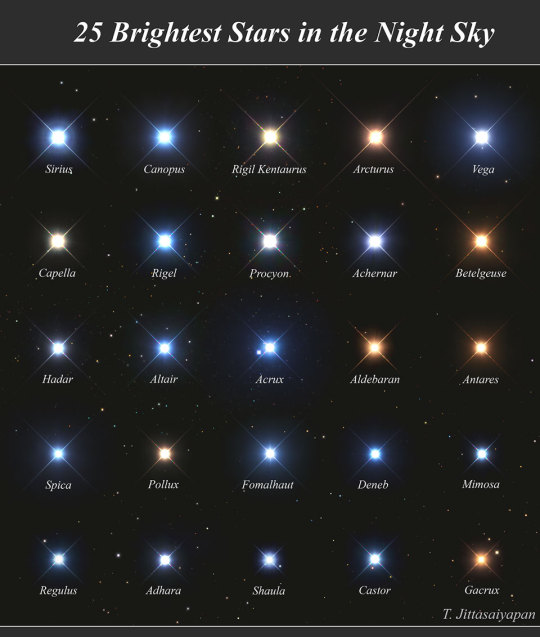
Do you know the names of some of the brightest stars? It's likely that you do, even though some bright stars have names so old they date back to near the beginning of written language. Many world cultures have their own names for the brightest stars, and it is culturally and historically important to remember them. In the interest of clear global communication, however, the International Astronomical Union (IAU) has begun to designate standardized star names. Featured here in true color are the 25 brightest stars in the night sky, currently as seen by humans, coupled with their IAU-recognized names. Some star names have interesting meanings, including Sirius ("the scorcher" in Latin), Vega ("falling" in Arabic), and Antares ("rival to Mars" in Greek). You are likely even familiar with the name of at least one star too dim to make this list: Polaris.
50 notes
·
View notes
Text
The first half of the Closing Ceremony of the 2006 International Astronomical Union (IAU) General Assembly has just concluded. The results of the Resolution votes are outlined here.
It is official: The 26th General Assembly for the International Astronomical Union was an astounding success! More than 2500 astronomers participated in six Symposia, 17 Joint Discussions, seven Special Sessions and four Special Sessions. New science results were vigorously discussed, new international collaborations were initiated, plans for future facilities put forward and much more.
In addition to all the exciting astronomy discussed at the General Assembly, six IAU Resolutions were also passed at the Closing Ceremony of the General Assembly:
Resolution 1 for GA-XXVI : "Precession Theory and Definition of the Ecliptic"
Resolution 2 for GA-XXVI: "Supplement to the IAU 2000 Resolutions on reference systems"
Resolution 3 for GA-XXVI: "Re-definition of Barycentric Dynamical Time, TDB"
Resolution 4 for GA-XXVI: "Endorsement of the Washington Charter for Communicating Astronomy with the Public"
Resolution 5A: "Definition of ‘planet' "
Resolution 6A: "Definition of Pluto-class objects"
@random-potato-mil if you're gonna be a whiny shit baby about science you don't understand, at least be honest about it instead of making shit up.
14 notes
·
View notes
Note
Sagittarius (derogatory) (affectionate)
Strictly speaking, I'm only a Sagittarius by the overly reductive and simplified tropical zodiac, which divides the sky into, conveniently, twelve segments of equal size! The actual constellations that appear in the sky over the course of the year using the IAU (International Astronomical Union) boundaries number thirteen, with Ophiuchus appearing between Scorpio and Sagittarius, and everything is offset by like, a month minimum.
The durations are very different, too! The sun is only 'in' (ie. appearing in front of from the perspective of Earth) Scorpio for nine days, for instance, with my birthday actually falling within that rarest of signs (yeah, I just missed Ophiuchus). I would also be considered Scorpio in sidereal astrology, which makes some sort of nod at attempting to offset them for the modern day, although that also makes the error of twelve equal sections. (Those in The Ophiuchus Zone (November 29-December 15) could have conceivably three different signs - Sagittarius by tropical, Scorpio by sidereal, Ophiuchus by IAU boundaries. Good times!)
Then, of course, there's the fact that I just don't fit Sagittarius or Scorpio, in terms of personality. Like if I do those bingo sheets, I'll often get lowest for Sagittarius or Scorpio. The ones I fit closest to, personality-wise, are Taurus and Virgo.
So! Sagittarius (derogatory) (affectionate) (inaccurate), tyvm~
3 notes
·
View notes
Note
hi!!! i was wondering if you could tell me a little about dwarf planets and what makes them dwarf planets- the only one i really know about is pluto lol
yeah of course!
so, as most people know, when pluto was discovered in 1930, it was classified as a planet, and in 2006, it was moved to a new classification of celestial bodies called dwarf planets.
For many years, there wasn't a solid definition on what a planet was, other than it orbited the sun, and pluto fit this definition. However, in the 1990's and early 2000's, scientists started discovering many more objects in the kuiper belt that, by this definition, would be classified as planets. We were used to having 9 planets in our solar system, but without a proper definition of a planet, we'd end up with many, many more planets than we had originally accounted for.
so, in 2006, over 2500 scientists gathered together as the international astronomical union (IAU) to discuss this issue, and emerged with a formal definition of a planet.
in order to be classified as a planet, a celestial body must:
be in orbit around the sun
have enough mass to form itself into a nearly spherical shape, and
have cleared its orbit (meaning it is gravitationally dominant enough that there are no other objects in its orbit besides its moons
If a celestial body fits the first two, but doesn't fit the last (which includes pluto), it was classified as a dwarf planet. other objects (besides moons) that didn't fit the criteria for a planet or a dwarf planet were classified as small solar system bodies.
there are five dwarf planets in our solar system: Pluto, Eris, Makemake, Ceres, and Haumea. with the exception of Ceres, which is located in the asteroid belt, all the dwarf planets lie in the kuiper belt, far beyond neptune's orbit.
Below are photos of each of the dwarf planets!
pluto

ceres

makemake

haumea
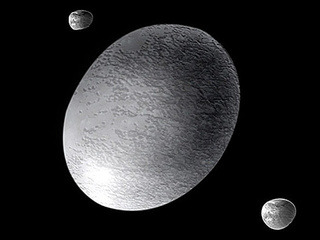
and finally, eris

all photos from NASA
#hi! thanks for the ask!!!!#aspaceinthecosmos#space#astronomy#outer space#answered#eight legs to the wall#<- a friend :)#dwarf planets#pluto#eris#ceres#makemake#haumea#space history
36 notes
·
View notes